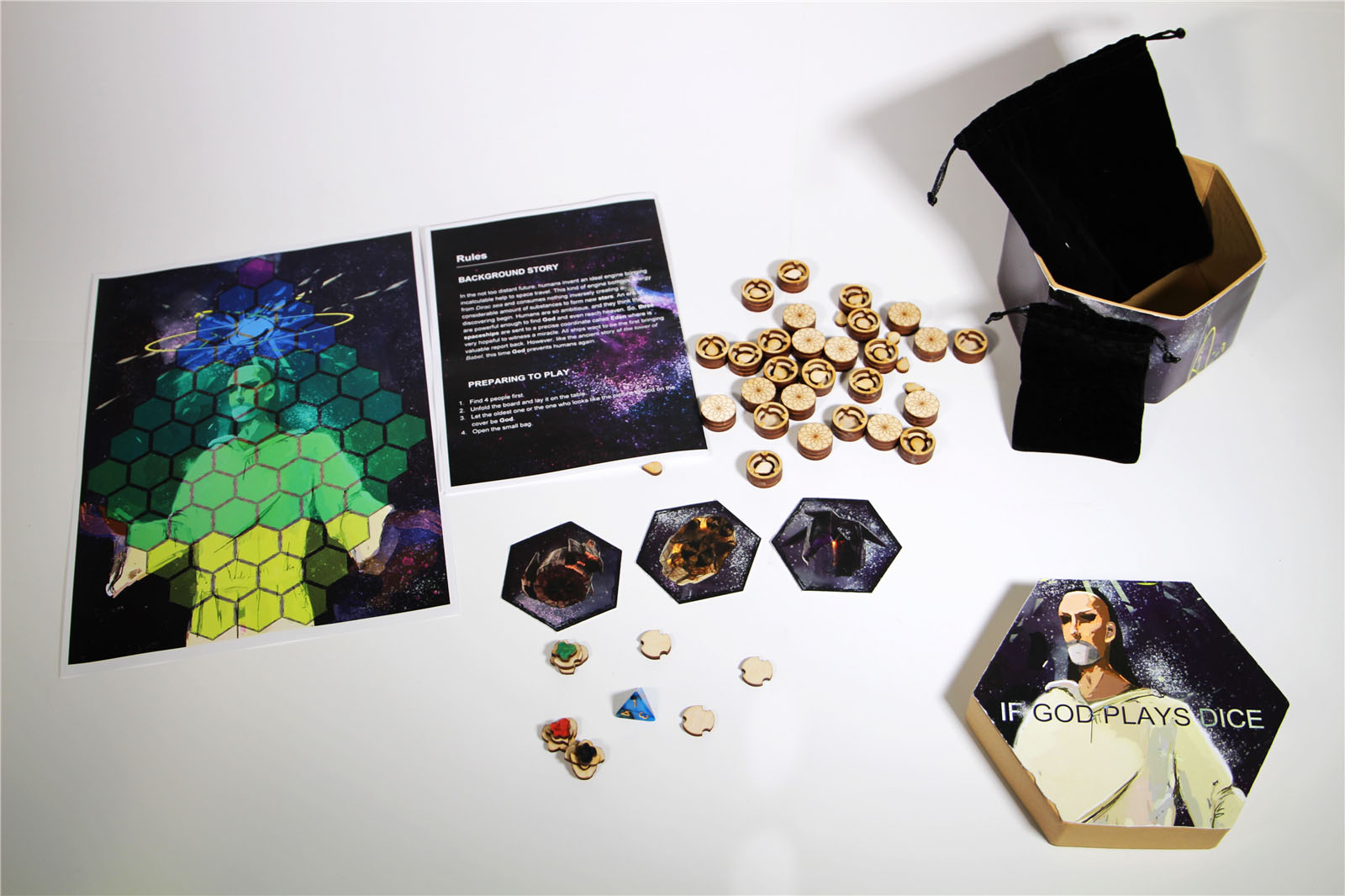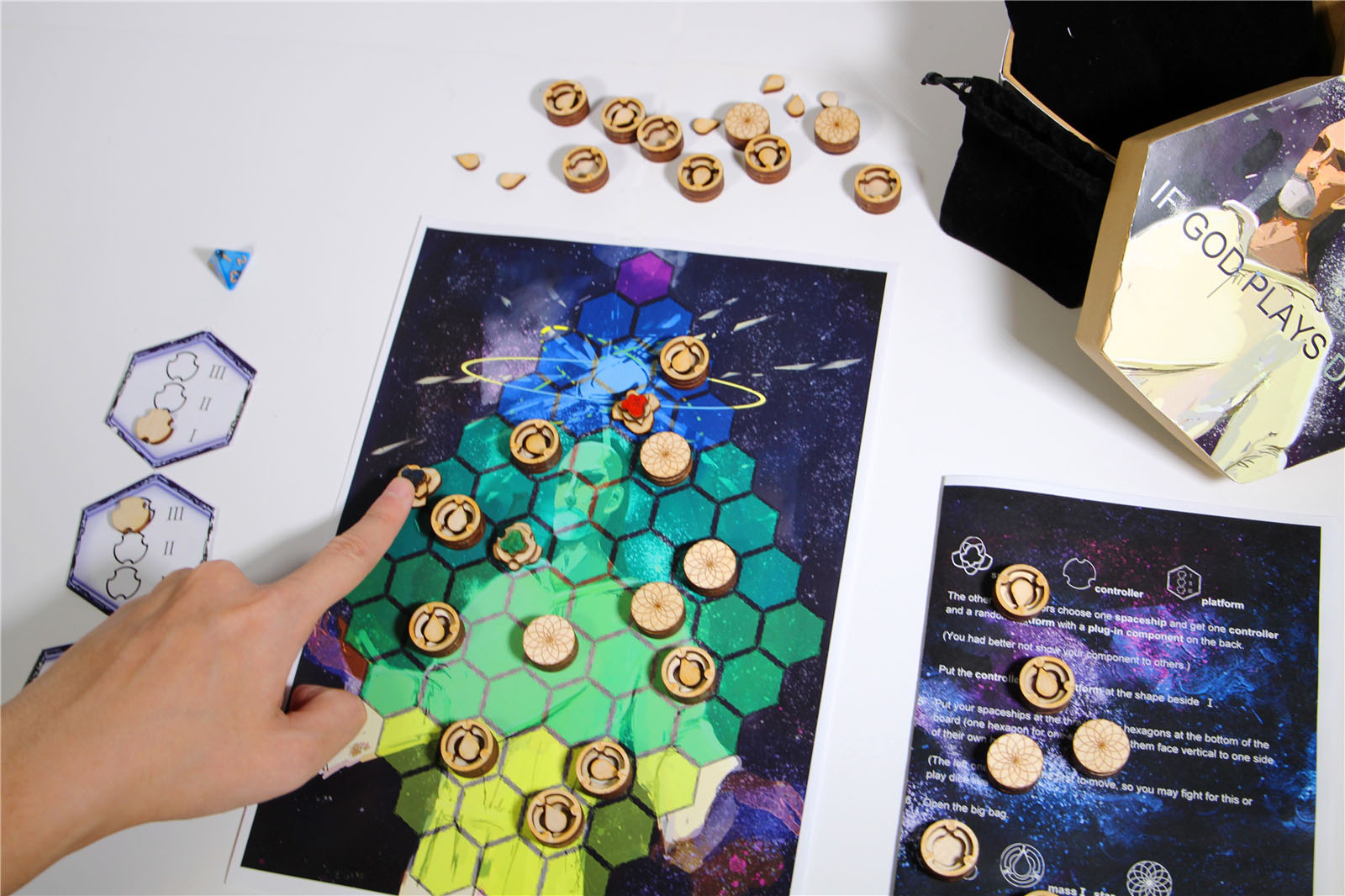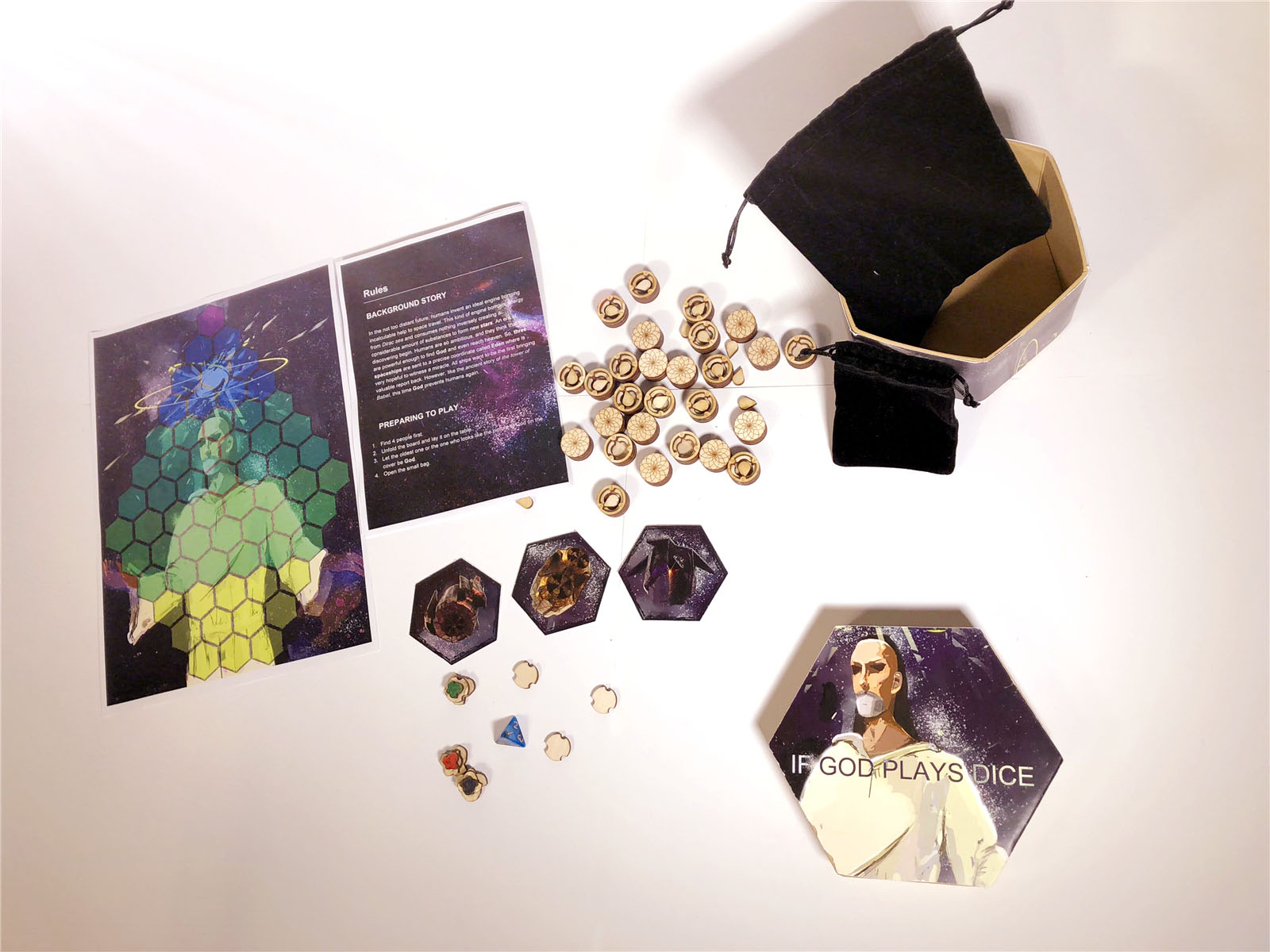What do we talk about when we talk about board games
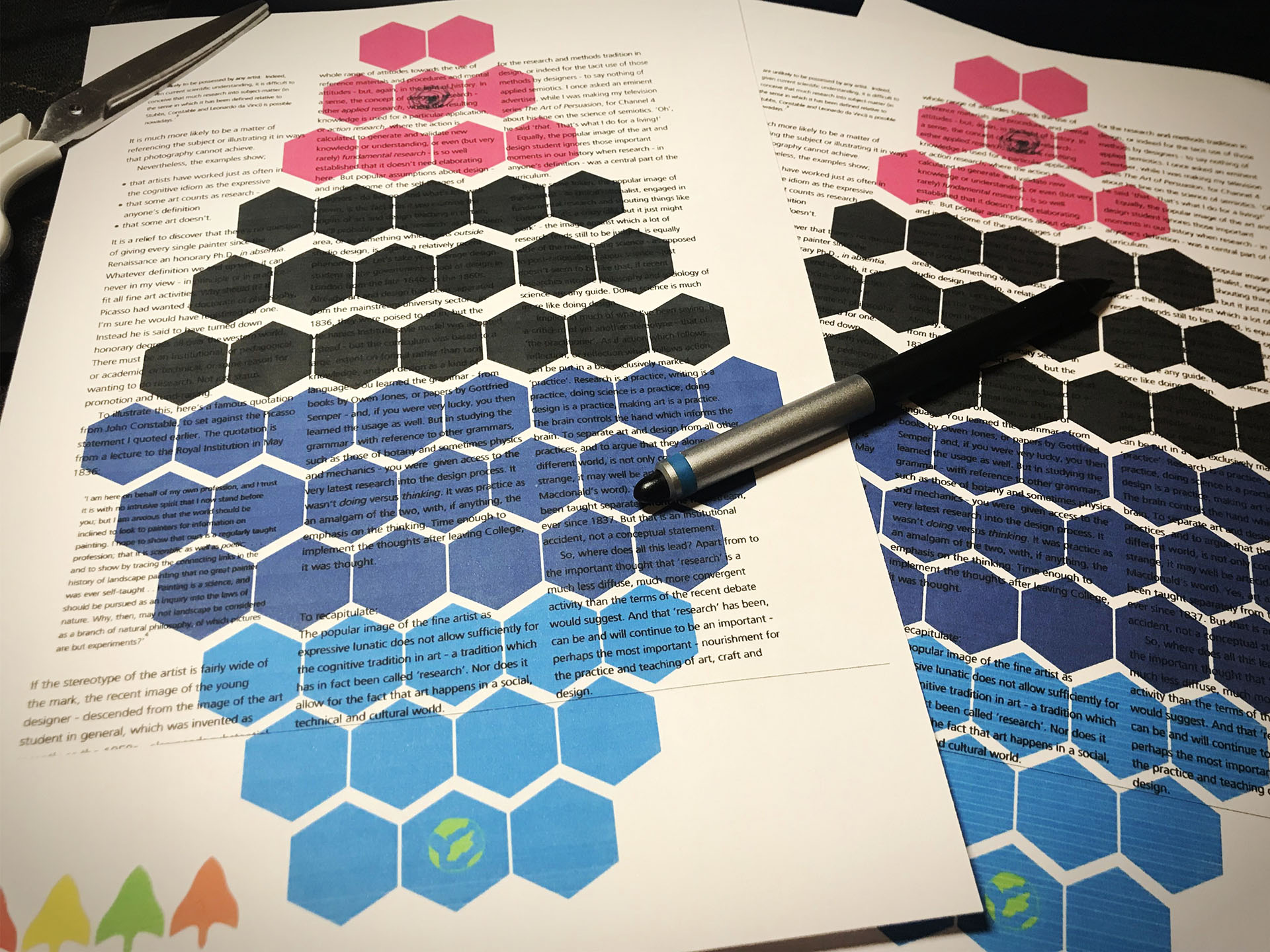
Those sentences are printed by mistake because of my roommate. ↑
Then she said, “WOW! I just created art for you!” (๑•́ ∀ •̀๑)
Before 10.10
Someone who saw the title must be thinking this guy should know a lot about board games. However, the truth is that I seldom play board games except for Legends of the Three Kingdoms. Beyond that, I played Armello for 150 hours on steam if it counts and… there is nothing more about board games…
(I hope I could find something to write here.)
Then there are some ideas.
I want to tell a story about space travel.
A.D. 5000 (or later, whatever) Earth is going to explode because of some unknown reasons (but everyone knows that), so four spaceships are sent to find a new place for we human beings to live. One expected aim is only three constellations away. Then the plot twists:
Ⅰ When a ship arrives the second constellation, they find some remains of an upper civilization which is the creator of Earth. They get wisdom from that and figure out how to save Earth. So, they just come back.
Ⅱ A ship locate the planet and successfully slow down and land. However, the astronauts receive the message that it is too late and they shall live alone in the universe as the only group of survivors.
Ⅲ A ship may find the planet or not, while their speed reducer is broken and they travel too fast at the speed of 99.999% light. Because of the Theory of relativity, they move to the future and are close to the end of the world. They suffer a lot from desperation but finally decide to keep accelerating and fly to another oscillating period of the universe.
I want these three endings or should I say three ways to win.
(Someday, my language teacher asked me “Can a game be literature?” I think this question is quite worth considering. Nowadays many games tell stories, but I don’t think there is one game could compare to Hamlet or Faust. Maybe I can work towards this goal. →So, the first thing is I should rewrite all those !@#$ above.)
Some cards.
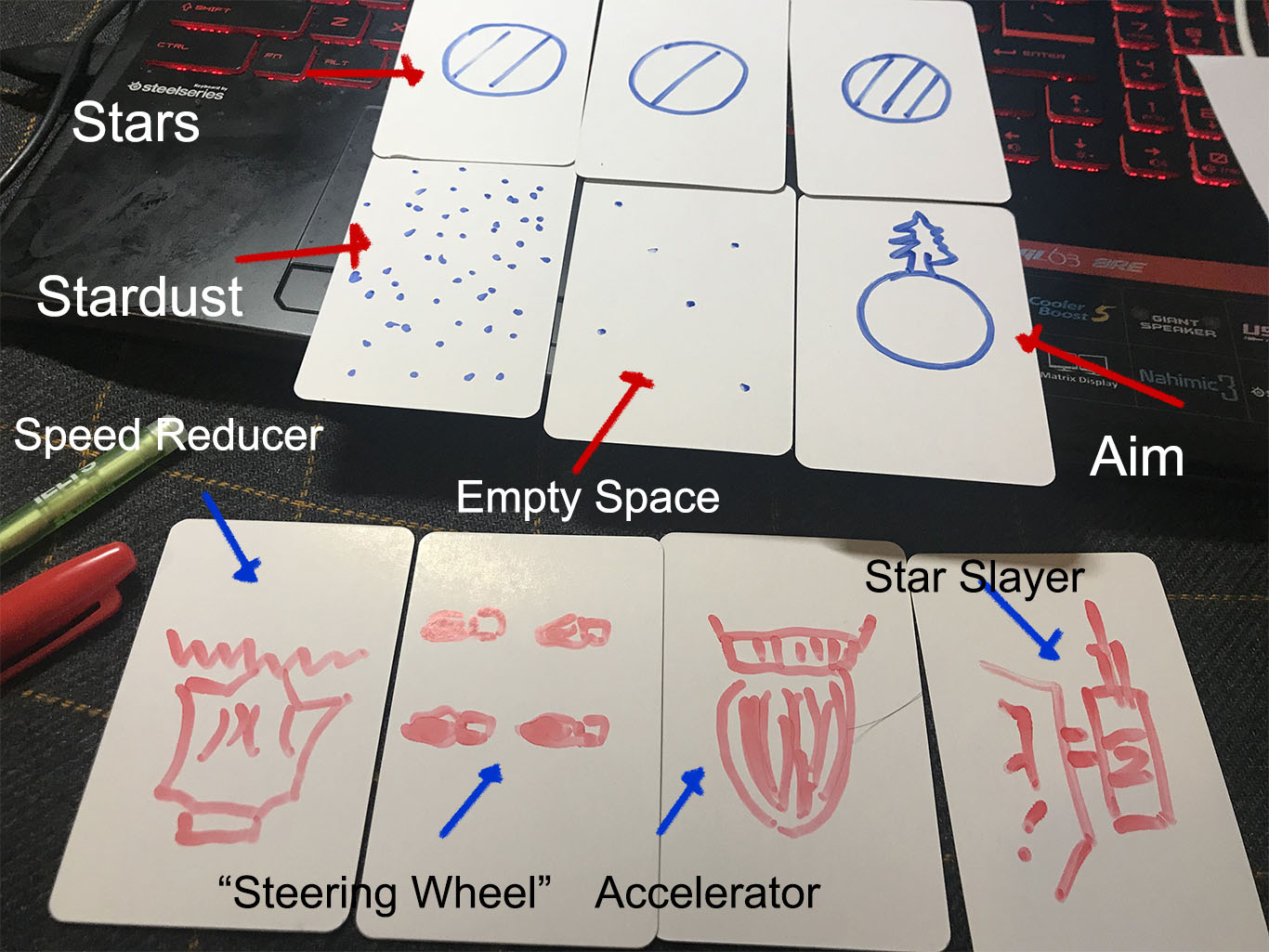
Blocks
Stars: Spaceships can use their gravity to turn. Their mass differs, so if the speed of a ship is too slow when it approaches a star, it will crash.
Stardust: Spaceships with a special engine on will accelerate when they cross this area. On the contrary, if the engine is off, spaceships will slow down.
Empty Space: Just… empty.
Aim: Remains of upper civilization or Place to live
Equipment
Speed Reducer: Slow down to any level.
“Steering Wheel”: Turn to any direction.
Accelerator: Accelerate to one higher level.
Star Slayer: Destroy a star or wipe stardust.
General rules.
Move spaceships to discover surrounding areas.
Choose a proper way to win with given items above.The Speed of spaceship 1/2/3/4/5
1 move one step to any direction
2 move two steps forward
3 move there steps forward
4 move four steps forward
5 can move to a new universe ( but should cross the end of the map)constellations Ⅰ/Ⅱ/Ⅲ/Ⅳ
Ⅰ speed limit ≤ 2 mass of star ① ( if speed ≤ 1 will crash when close to a star)
Ⅱ speed limit ≤ 3 mass of star ② ( if speed ≤ 2 will crash when close to a star)
Ⅲ speed limit ≤ 4 mass of star ③ ( if speed ≤ 3 will crash when close to a star)All spaceships can discover one step around them and share their maps.
How to Win
Reach speed 5 and fly across the end of the map or
Find Aim at constellations Ⅱ and return to earth and safely land ( speed 1) or
Find Aim at constellations Ⅲ and safely land ( speed 1)10.11
I am aware that the square shape makes the map too long and players have few choices. So, ↓
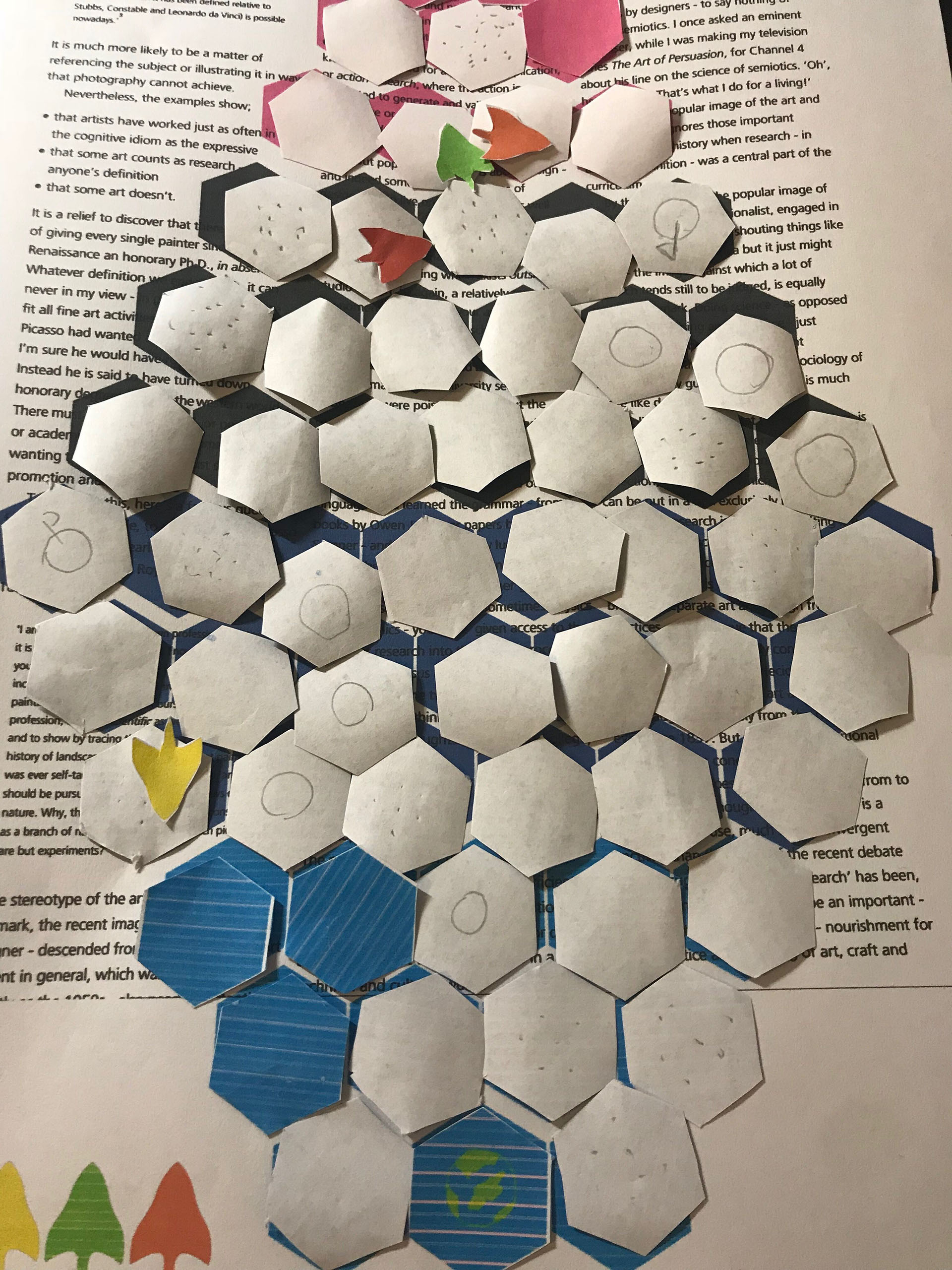
After serval tests, I find it’s tough to win by returning to earth. So, I may delete the condition that the spaceship shall safely land (just in this case).
Add explanation of Speed Limit:
You can not accelerate to a higher speed within one constellation.
However, if you turn back with the higher speed, you can still maintain it.
10.12
After the update yesterday, I am very delighted to see… nothing truly changes and still Speed Reducer wins 8 games in 10 no matter how I turn the number of stars and the order of ships.
I may totally change the rules because somehow I can’t keep all these complicated settings balanced.
This reminds me of Dark Souls Series. Miyazaki Hidetaka sometimes sacrifices gameplay for settings like transmission between bonfires(lanterns) in Dark Souls Ⅰ and Bloodborne. However, my tiny little board game can’t bear this kind of sacrifice. (:з」∠)
10.13-10.16
10.13 Play and Think
10.14 Play and Think
10.15 Write and Draw some settings
10.16 Successfully(maybe) change the rules and play a whole day to test if player(s) can have the equal possibility to win
I will introduce the rules later and here is the new story.
Three spaceships are sent to find God or at least prove if God exists, and they have the exact coordinate of where God or miracle is. Like Tower of Babel, this time God prevent we human to reach heaven again. God can ignore physics to change the route of stars and even create new stars. However, at the same time, these actions cannot be detected by humans. So, an invisible war has begun.
In this game, God is much powerful than humans, but dramatically God has to play dice to decide whether or how much he can move or change the stars.
I would like to call this game “If God plays dice.” ( Einstein said “God does not play dice,” but quantum theory… ( ꒪⌓꒪)
10.17-10.18
Now the space travel has become an asymmetrical multiplayer game like Friday the 13th: The Game and Dead by Daylight. Three Spaceships equipped with different items use their unique abilities to travel through the dangerous universe, and God moves or creates stars to prevent them from touching the door of heaven.
(The idea of moving stars came from David.)
I shall keep the rules of speed and movement and set the limitation to 3 for all constellations.
So as the rules of mass, except for slow speed leading to crashing, different stars would interact with each other because of mass and
God can decide whether these interactions happen if they are not detected by spaceships. (This rule makes observation an essential element just like quantum theory.)
A spaceship in my game.
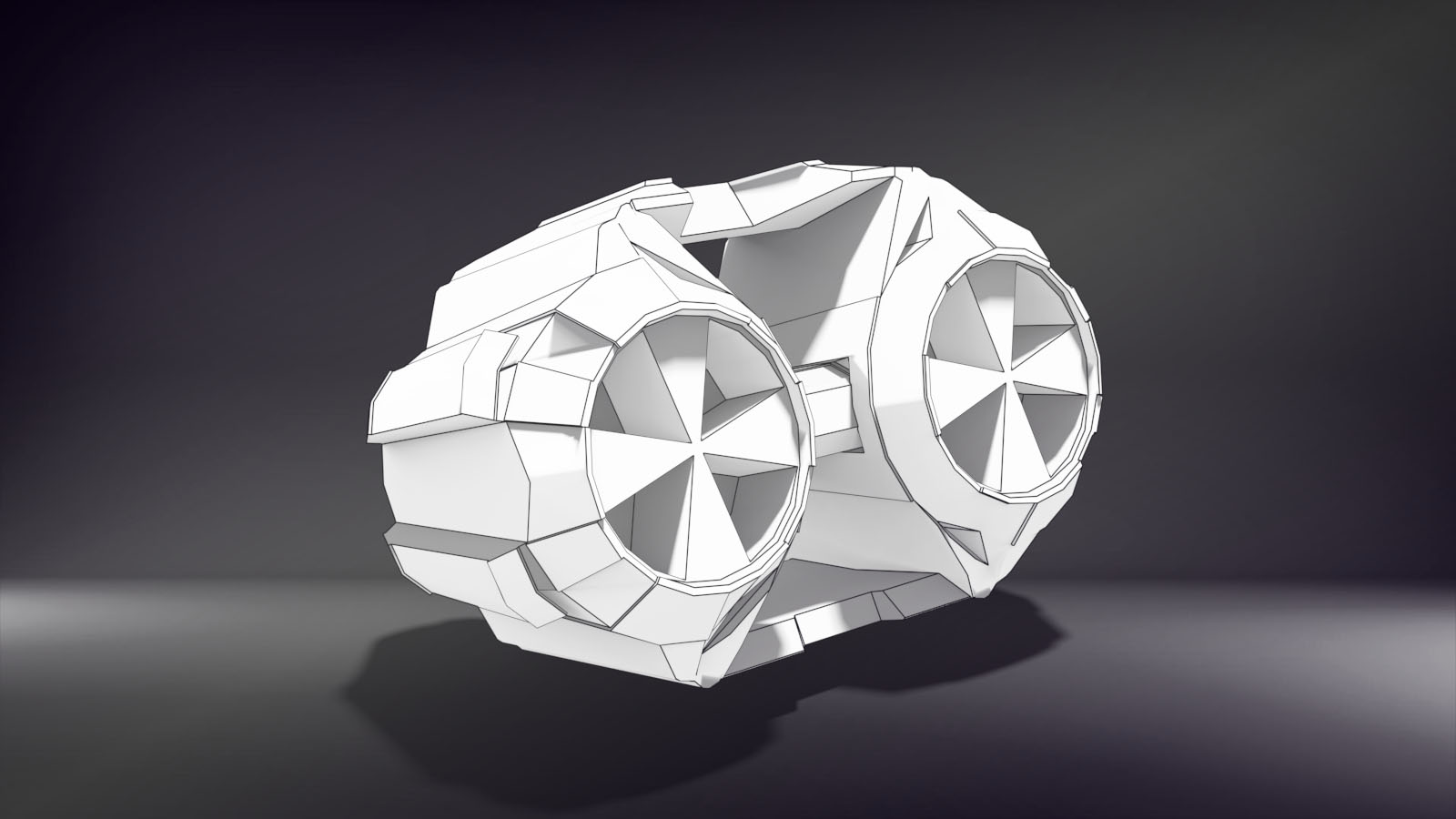
Another one. (that one is too big↑) And this ship is also designed for overlapping.
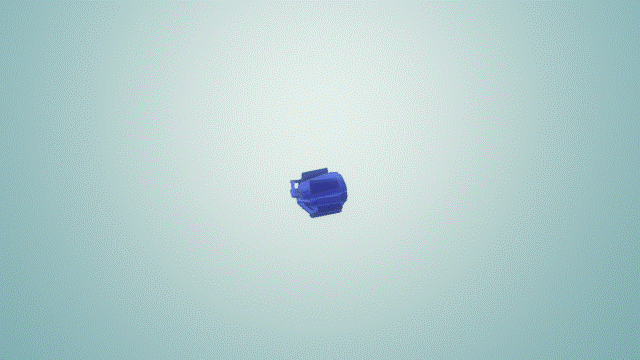
10.19
I wanted to 3D print those models, but I suddenly find that I have not attended the induction and the nearest one is 10.23… So, I change my mind of making the spaceships and unite them into the same way of shaping stars.
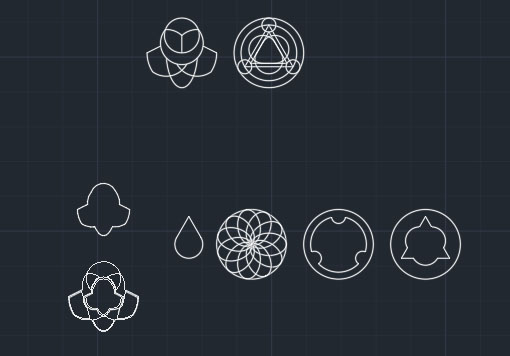
Left part is spaceship which is divided into three parts for a certain height and overlapping. (And the basic shape is like God stretches out his arms to embrace someone.)
Right parts are stars consist of four slices that can be easily combined in three different ways to present different mass.
10.20-10.23
After many tests, rules finally seem to be balanced but still a bit complicated. I will adjust it tomorrow and write a formal version.
Let’s watch some detailed design and artwork first.
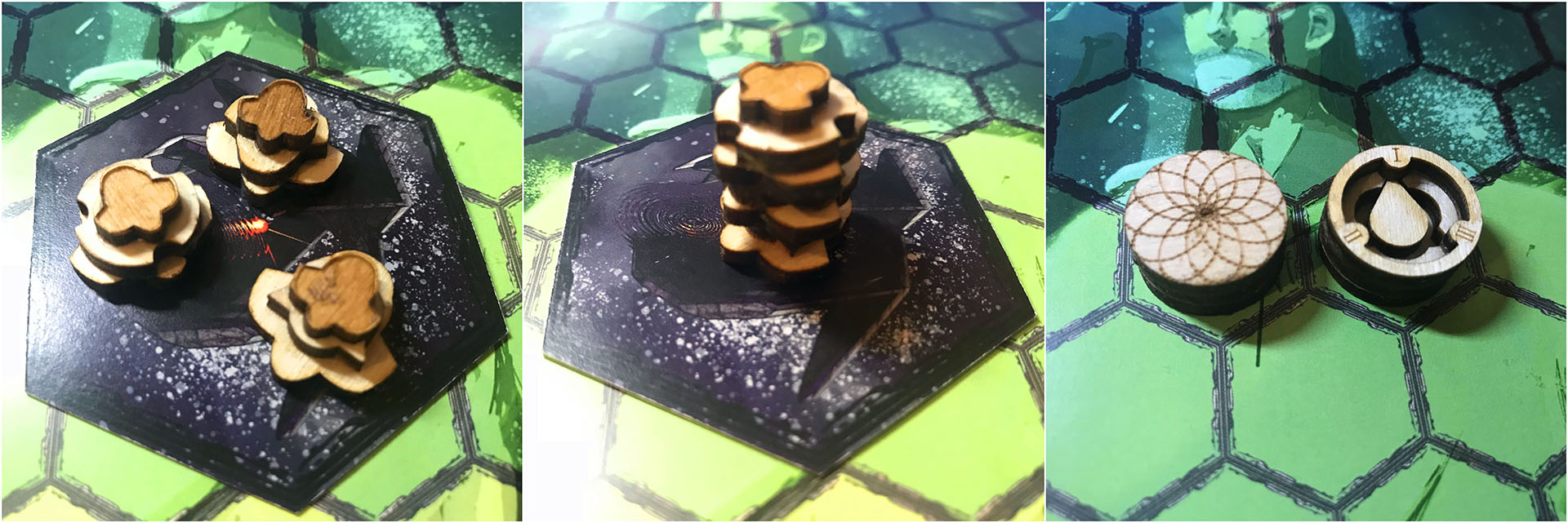
Left two are my lovely ships. The right one shows two sides of stars, and you can change the mass of stars by turning the core.
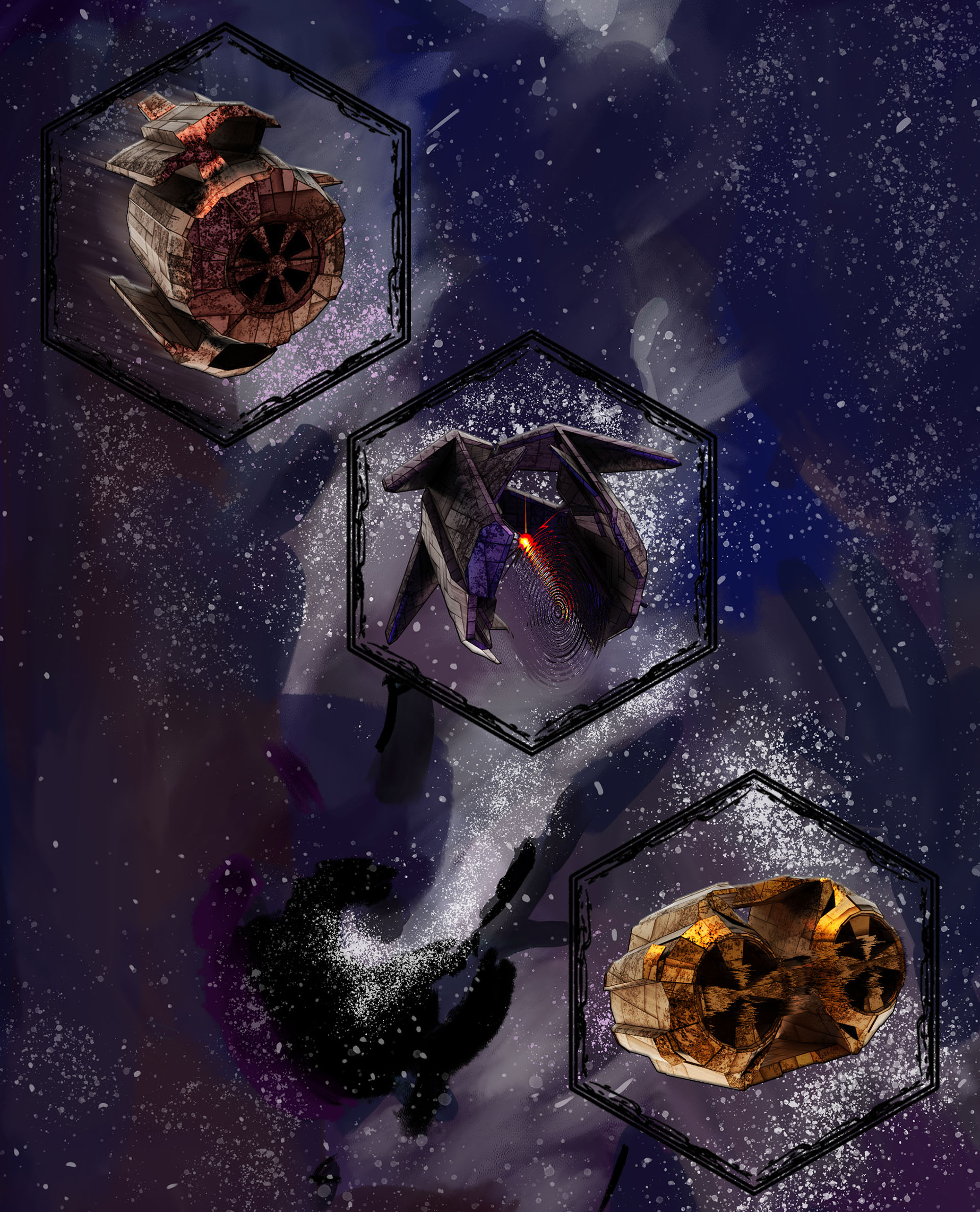
I decide to change previous ships into equipment. Is this a kind of laziness?
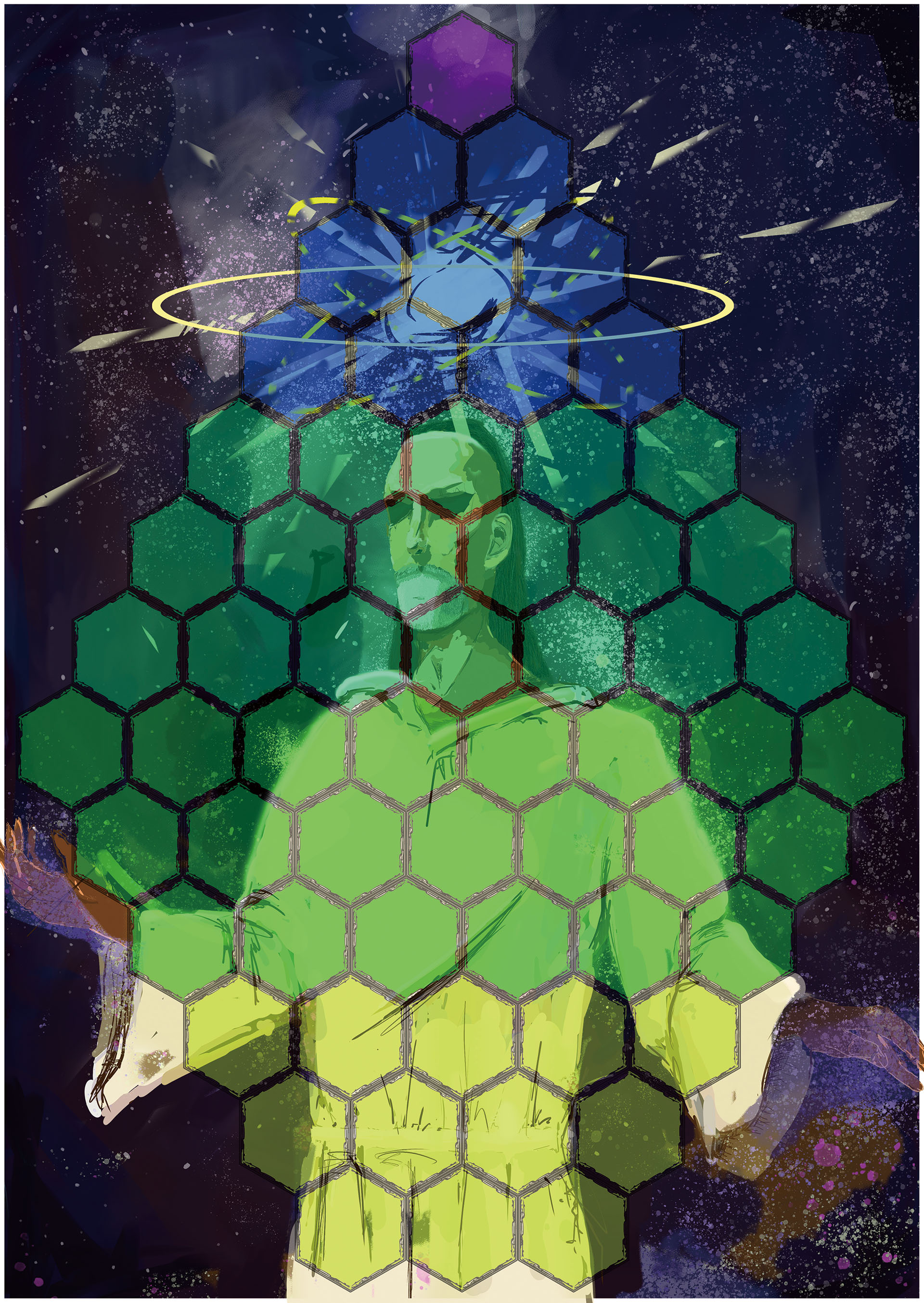
Thank Gin for drawing God.
(The board looks too colorful on PC but too dark on paper (≡•̀·̯•́≡)
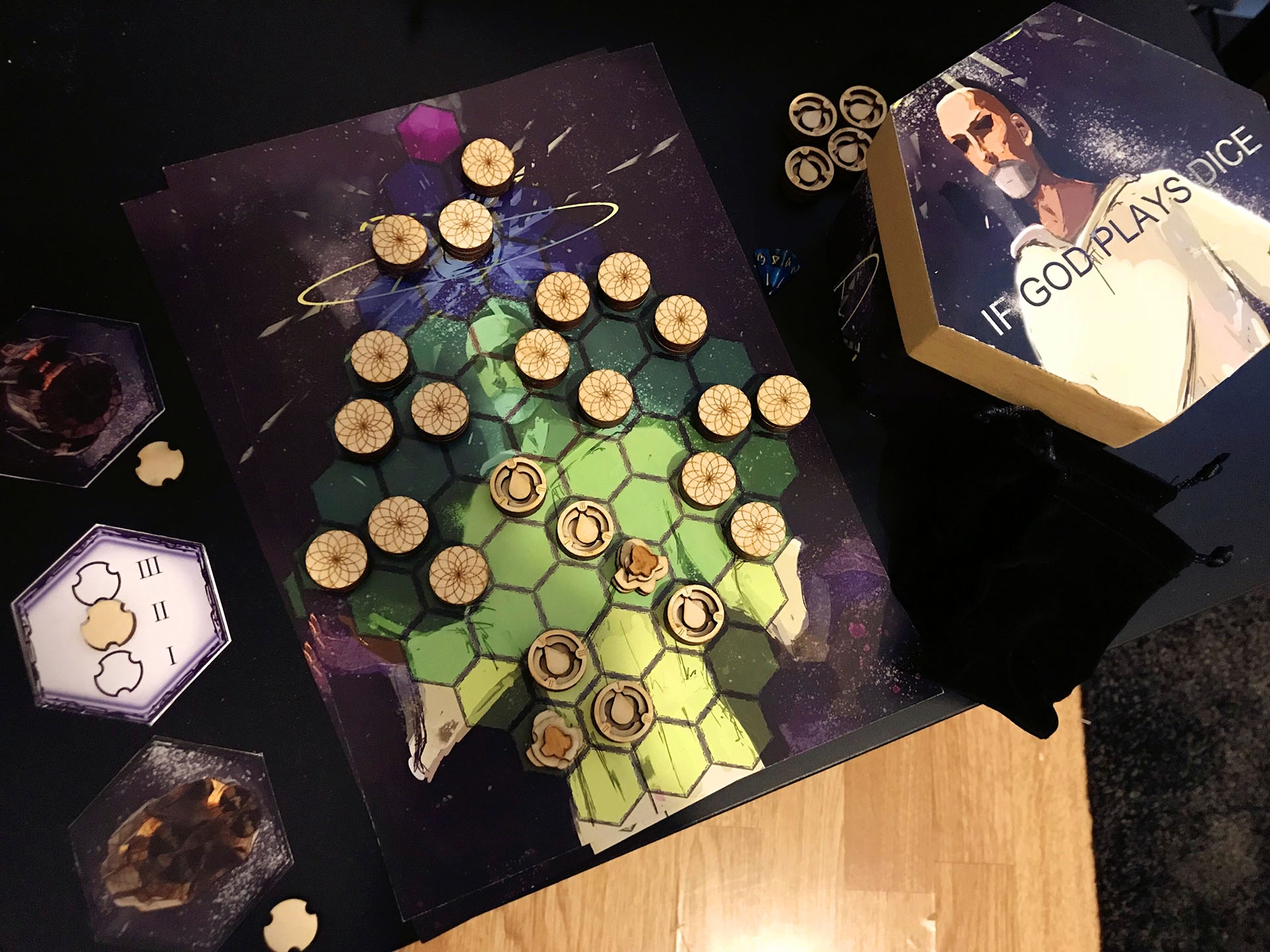
My first board game is going to finish! (You have to sing this sentence. I am serious.)
Very very very important 10.24
Today my project gets a significant update, and I am delighted with the rules now. Thanks for coming across a game called Santorini that I can finally connect all the elements together and function well and interestingly.
Before the update, there are a few problems in the game:
- In the preparing part, God has too much work to place almost all the stars to form the board.
- Spaceships have few choices when they are surrounded by stars, and the only two interactions are using an item or crashing on them.
- There are few ways for players to interact with each other as well.
- Because of the truth above, each turn there is too much calculation but less fun.
So, now rules have been changed like this.↓
Rules
BACKGROUND STORY
In the not too distant future, humans invent an ideal engine bringing incalculable help to space travel. This kind of engine borrows energy from Dirac sea and consumes nothing inversely creating a considerable amount of substances to form new stars. An era of discovering begin. Humans are so ambitious, and they think that they are powerful enough to find God and even reach heaven. So, three spaceships are sent to a precise coordinate called Eden where is very hopeful to witness a miracle. All ships want to be the first bringing valuable report back. However, like the ancient story of the tower of Babel, this time God prevents humans again.
PREPARING TO PLAY
Find 4 people first.
Unfold the board and lay it on the table.
Let the oldest one or the one who looks like the picture of God on the cover be God.
Open the small bag.
The other three players choose one spaceship and get one controller(a small piece of wood) and a random card with a plug-in component on the back. (You had better not show your component to others.)
Put the controller on the card at the shape beside Ⅰ.
Put your spaceships at the three yellow hexagons at the bottom of the board (one hexagon for one ship) and let them face vertical to one side of their own hexagon.
(The left one would be the first to move, so you may fight for this or play dice like God.)
Open the big bag.
There are stars (a round shape plus a water drop shape) inside. What figure(Ⅰ or Ⅱ or Ⅲ) the drop points decides the mass of the star.
SOME TERMS
Star:
MassⅠ- spaceships cannot step on the hexagon.
MassⅡ- spaceships cannot step on the hexagon and will crash on the star if maintain speedⅠ next turn because of gravity.
MassⅢ- spaceships cannot step on the hexagon and will crash on the star if maintain speedⅡ next turn or pass with speedⅠ this turn because of gravity.
Gravity- at the end of a round,
if a star of massⅠ is close to a star of massⅢ, they will form a new star of massⅡ at the later one’s hexagon.
if a star of massⅠ is close to a star of massⅡ, they will form a new star of massⅢ at the later one’s hexagon.
if a star of massⅡ is close to a star of massⅢ, they will form a new star of massⅠ at the later one’s hexagon.
if all the three conditions happen in a small area, they will happen following the order above and each round will just let one happen.
if the same condition happens in a small area, they will happen as the wish of God.
Miracle Point: The purple hexagon on the top of the board.
Constellation: Three lines of hexagons form a constellation and they have the same color.
Undiscovered:
Stars created by God are put upside down(the side with 11 ovals).
Spaceships can discover their surrounding areas (one step away) at the end of their turn.
Synergism:
When two spaceships stay at the same hexagon, they will face the same direction depending on the lower one. If the speed of the lower one is lower than the upper one, it will carry the upper one to move.
STARTING TO PLAY
Begin with the left player to the middle one then the left then God and repeat each round.
Things for spaceships to do
- Choose a speed (place controller at the shape beside Ⅰ or Ⅱ or Ⅲ) and move.
- Use a plug-in component.
- End their turn to discover the surrounding areas.
Speed:
SpeedⅠ- move one hexagon to any direction vertical to a side. (before the end of your turn you can spin thousands of degrees as you like.)
SpeedⅡ- move two hexagons with maximum one turning vertical to an adjacent side. (You can turn when you move to the second hexagons.) After movement, create a star of massⅠ put it on a hexagon surround.
You shall not create a star when you enter or move out the miracle point.
SpeedⅢ- move three hexagons vertical to your current facing side. After movement, create a star of massⅡ put it on a hexagon surround.
You shall not create a star when you enter or move out of the miracle point.
(Attention- you cannot speed up from Ⅰ to Ⅲ or slow down from Ⅲ to Ⅰ)
Crash & Reborn:
Crash on the edge- reborn at one of the three beginning hexagons. After you reach the miracle point, reborn there. Each spaceship can only reborn once in each condition.
Crash on a star- follow the rules of Speed and the star will reduce 1 level of mass. (Star of MassⅠ will be wiped.) The same reborn setting.
plug-in component:
Warp Accelerator- jump over a star or a spaceship in front of your facing hexagon.
Star Slayer- wipe a star or reduce it to a level of mass (if the star is still undiscovered, you can tell other player reduce 1 level or 2 levels or 3 levels but not a certain mass.) within two constellations.
Space Folder- push anything on your facing hexagon one step away, and if there is another star or spaceship on the remote hexagon, both will be destroyed.
All plug-in component can be used once, but reborn or reach the miracle point can refresh them.
Things for God to do
Play dice.
Dice: A four-sided one. The upper corner shows the result Z.
Create an undiscovered star of massX in the middle two constellations (two kinds of green colors).
Move a star of massY to a hexagon one step away from its former hexagon.
X+Y≤Z
Both two actions cannot be seen (one step away) by spaceships and can just be done once in a round.
Decide the effects between stars due to gravity at the end of the round.
TO WIN
The first spaceship getting to the purple hexagon and returning back to one of the three beginning hexagons wins.
If no spaceship can make the journey, God wins.
I will explain how these rules and settings work and why I choose them.
10.25
It is definitely a lovely shiny day in my life. I have to say that Alan’s class is very very very… (there are maybe thousands of very here) interesting and helpful. What’s more, I feel deeply happy when I play my poor game with classmates and… miss the lunch.
I may summarize this project after finishing the report. ( The picture below is kind of like the report, infinite and profound.)
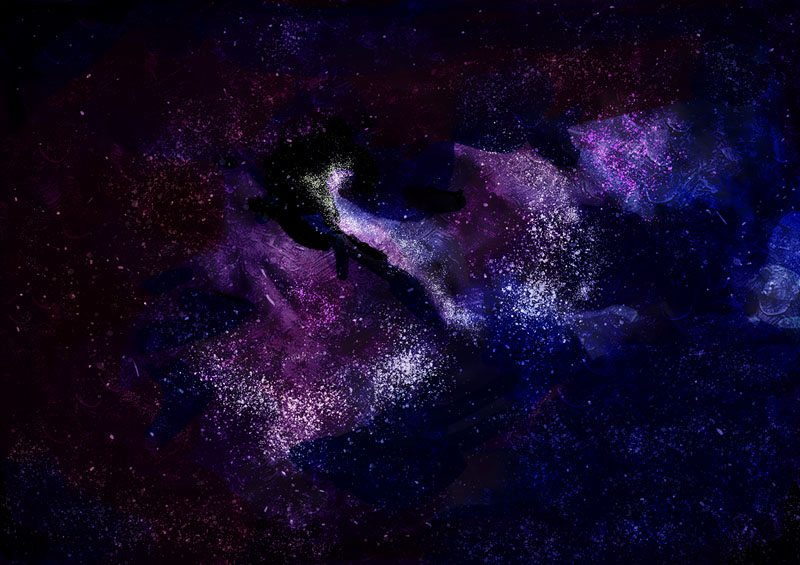
10.26
